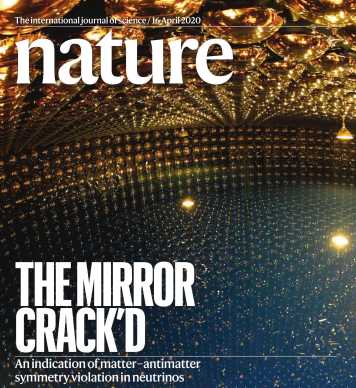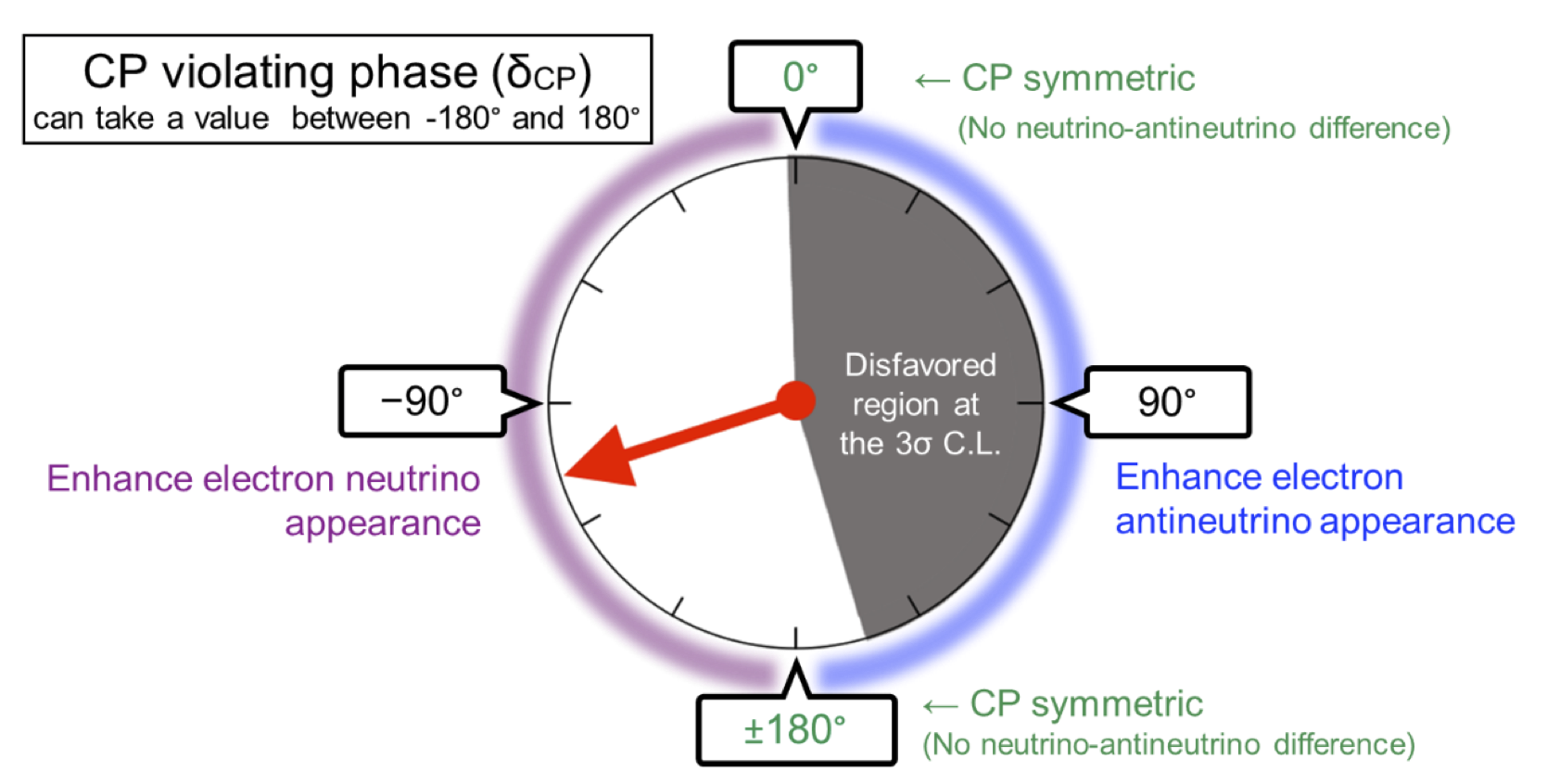PRESS RELEASE : T2K Results Restrict Possible Values of Neutrino CP Phase
Published in Nature, the results are a major step forward in the study of difference between matter and antimatter in the Universe.

The T2K Collaboration has published new results showing the strongest constraint yet on the parameter that governs the breaking of the symmetry between matter and antimatter in neutrino oscillations. This is an important step on the way to knowing whether or not neutrinos and antineutrinos behave differently.
These results have been published in the multidisciplinary scientific journal, Nature Vol. 580, pp. 339-344.external pagecall_made
Using beams of muon neutrinos and muon antineutrinos, external pageT2Kcall_made has studied how these particles and antiparticles transition into electron neutrinos and electron antineutrinos, respectively. The parameter governing the matter/antimatter symmetry breaking in neutrino oscillation, called δcp phase, can take a value from -180o to 180o. For the first time, T2K has disfavored almost half of the possible values at the 99.7% (3σ) confidence level, and is starting to reveal a basic property of neutrinos that has not been measured until now.
The ETHZ group of Prof. Rubbia has been deeply involved in the scientific, technical and managerial aspects of the T2K project since 2006. It has led the construction and operation of key components of the T2K Near Detector located at the Japan Proton Accelerator Research Complex (JPARC). The group is heavily involved in the data-taking and data-analysis process that made possible the publication of these results. The group is also involved in the maintenance and upgrade plans of the Near Detector.

For most phenomena, the laws of physics provide a symmetric description of the behavior of matter and antimatter. However, this symmetry does not hold universally. The effect of the asymmetry between matter and antimatter is most apparent in the observation of the Universe, which is composed of matter with little antimatter.
It is considered that equal amounts of matter and antimatter were created at the beginning of the Universe (Big-Bang). Then, for the Universe to evolve to a state where matter dominates over antimatter, a necessary condition is the violation of the so-called Charge-Parity (CP) symmetry.
Until now, CP symmetry violation has only been observed in the physics of subatomic particles called quarks, but the magnitude of the observed CP symmetry violation in quarks is not large enough to explain the observed dominance of matter over antimatter in the Universe. T2K is searching for a new source of CP symmetry violation in neutrino oscillations that would manifest as a difference in the measured oscillation probability for neutrinos and antineutrinos.
While the new T2K result shows a strong preference for enhancement of the neutrino rate in T2K, it is not yet clear if CP symmetry is violated or not. To further improve the experimental sensitivity to a potential CP symmetry violating effect, the T2K Collaboration will upgrade the Near Detector suite to reduce systematic uncertainties and accumulate more data, and J-PARC will increase the beam intensity by upgrading the accelerator and beamline.
The T2K experiment is supported by the Japanese Ministry for Culture, Sports, Science, and Technology (MEXT), and is jointly hosted by the High Energy Accelerator Research Organization (KEK) and the University of Tokyo’s Institute for Cosmic Ray Research (ICRR). The T2K experiment was constructed and is operated by an international collaboration, which currently consists of nearly 500 scientists from 68 institutions in 12 countries [Canada, France, Germany, Italy, Japan, Poland, Russia, Spain, Switzerland, UK, USA and Vietnam]. This result is made possible by the efforts of J-PARC to deliver high-quality beam to T2K.
The participation and research of Prof. Rubbia's group in T2K is supported by ETH Zurich and the external pageSwiss National Science Foundationcall_made (SNF).
